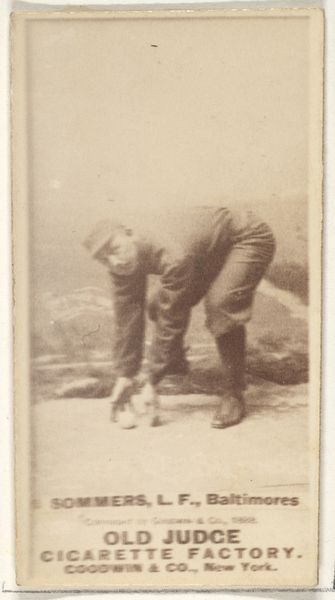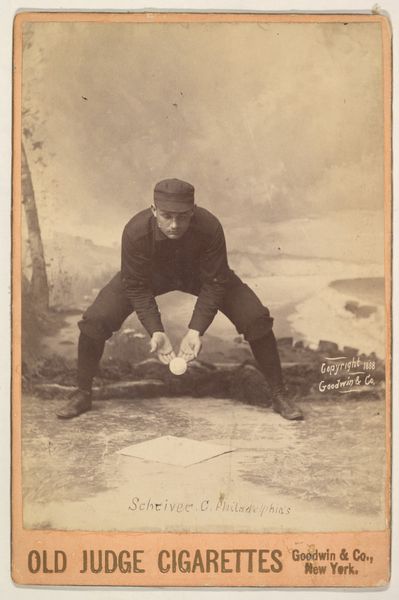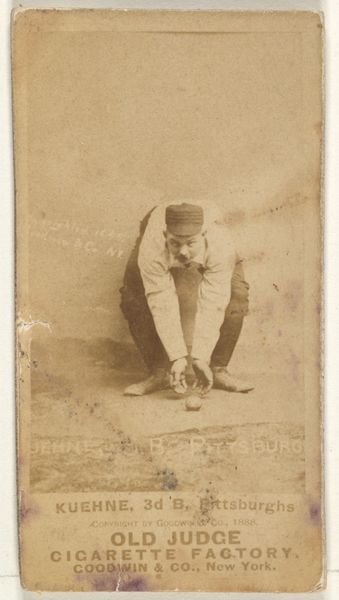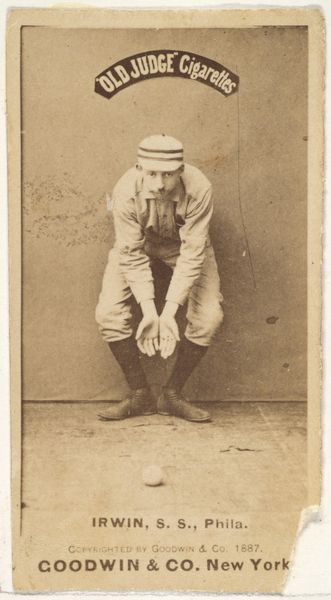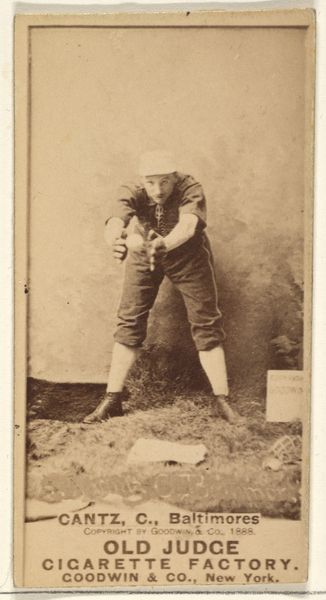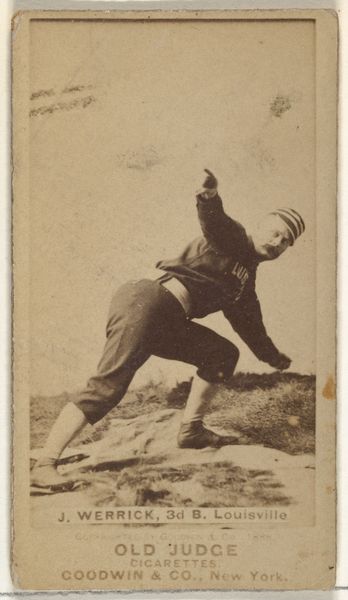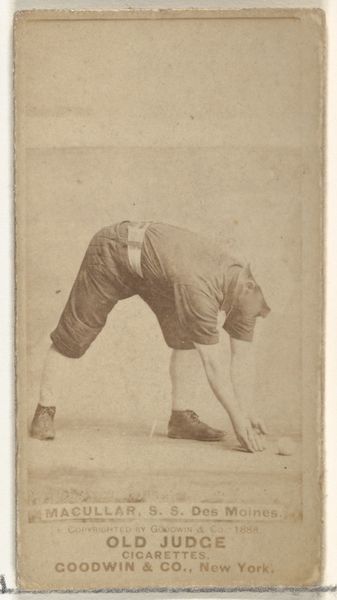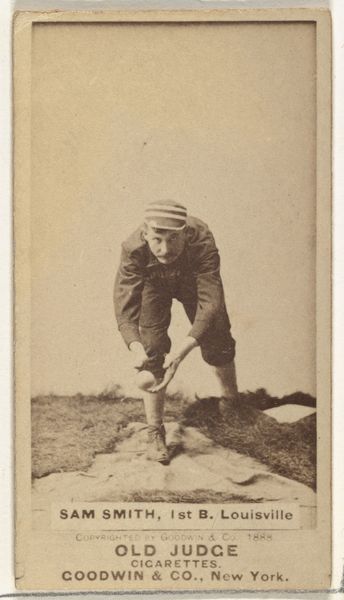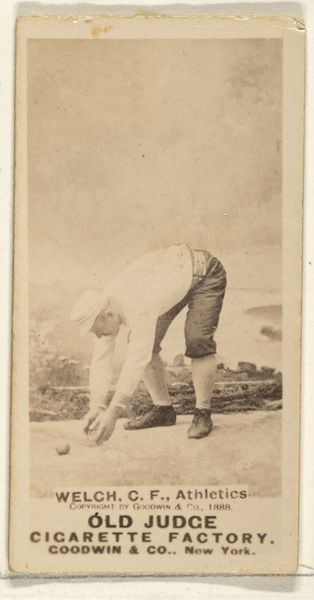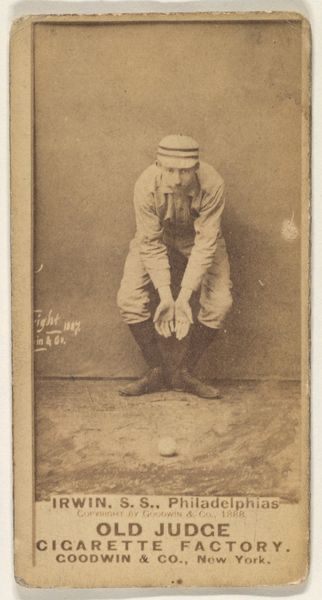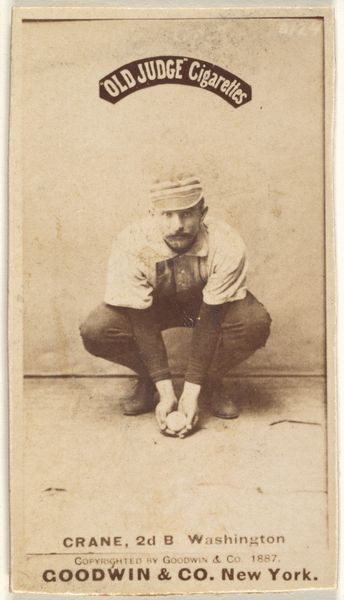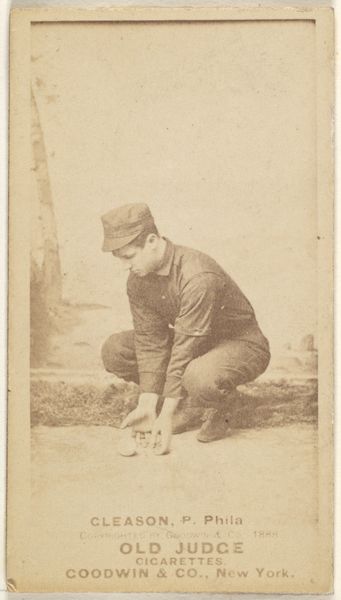
Tucker, 1st Base, Baltimore Orioles, from the Old Judge series (N172) for Old Judge Cigarettes 1888
0:00
0:00
drawing, print, photography
#
portrait
#
drawing
# print
#
baseball
#
photography
#
men
#
realism
Dimensions: sheet: 2 11/16 x 1 3/8 in. (6.9 x 3.5 cm)
Copyright: Public Domain
Curator: There’s something inherently serious about this early baseball card; a stillness that seems almost posed, frozen. Editor: Yes, a far cry from the dynamic images of athletes we are accustomed to today! What's striking is how it’s inextricably linked to commercial advertising; the card promoted Old Judge Cigarettes in 1888. Goodwin & Company produced it as part of the Old Judge series. Curator: Note how that association imbues the image with particular meaning. This image of “Tucker, 1st Base, Baltimore Orioles,” operates as more than a mere depiction of an athlete. In truth, such imagery often portrays symbolic figures of manhood, and this image is no exception, reinforcing late 19th-century ideals associated with commerce and leisure. It is a piece of social history and, dare I say, even folklore. Editor: Absolutely! We can see that even the printing methods – likely albumen or gelatin silver print – would impact how we perceive Tucker. The sepia tone evokes a certain sense of nostalgia, and it casts him, intentionally or not, in a visual language connected to “classic” Americana. He becomes a relic within a consumer product, almost instantly frozen as history. It also cannot be ignored how deeply ingrained cigarettes once were with a very different perception. It really invites discussions around consumerism. Curator: It makes you wonder, what other hidden mythologies are embedded in today's mass-produced imagery, waiting to be unearthed? Do they contain symbols we do not see, creating rituals we cannot even trace to sources? Editor: Exactly, and looking at it from this vantage point, "Tucker, 1st Base" reminds us that there are historical reasons, too, that certain brands attain cultural resonance – especially those built upon and complicit with social anxieties, longings, and cultural hegemonies. Curator: Ultimately, it leaves me pondering about the interplay between fame, mortality, and commodification—how images can both preserve and exploit a moment in time. Editor: Agreed; it’s a humble card, yet packed with potent messages, isn't it?
Comments
No comments
Be the first to comment and join the conversation on the ultimate creative platform.

